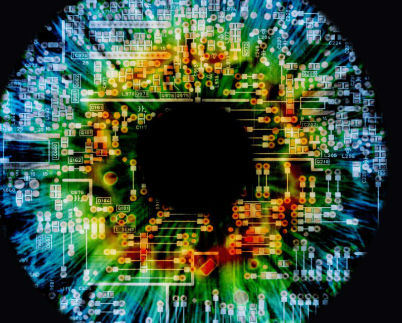IS’HAQ MODIBBO KAWU
NDA/PGS/FASS/P/023/15
INTRODUCTION:
Armies that could reach further, hit harder, and get there faster usually won, while the range-restricted, less well-armed, and slower armies lost. For this reason, a vast amount of human creative effort has been poured into extending the range, increasing the fire power, and accelerating the speed of weapons and of armies. Toffler (1995: 30)
All through the entire history of humanity on earth, technology has been applied to improve the weapons of warfare. Wars have evolved from the primitive duels between tribal societies and their deployment of primitive weapons, which represented the technological levels of those societies; to the more advanced weaponry of agrarian societies and their economies with commensurate levels of deployment of weapons, right through to the warfare between industrialized societies, which have seen the deployment of modern weaponry.
Mankind has seen a transition of weaponry: from fights with bows and arrows, to rifles, guns, tanks, aircraft, missiles, and as happened in Nagasaki and Hiroshima, during the Second World War, to the use of the most destructive weapon of all, the nuclear bomb! African pre-colonial societies, at the level of development of cavalry charges and the use of primitive guns at best, often massed futilely against the Gatling guns deployed so ruthlessly and effectively, by the colonial powers, as they subjugated one community, state or empire after the other, at the beginning of the colonial enterprise on the African continent, in the 18th and 19th centuries.
What is clear is that technology, even at the very rudimentary level, has always been the difference between victory and defeat in the entire history of warfare. When the famous philosopher of war, Carl von Clausewitz, asserted that “war is nothing but duel on a larger scale” and adding further that “war is thus an act of force to compel our enemy to do our will”, he recognized the decisive importance of the technology of delivery of the intention to deploy force, by adding that “force, to counter opposing force, equips itself with the inventions of art and science” (Clausewitz, 1976: 75). Schnitzer (2005: 279), also noted that:
In the past, advancements in technology were the result of warriors searching for perfect weapon. From the time a warrior picks up a stone in order to hit his adversary with it, we have been enamoured with the power of technology brought to the battle. Soon warriors learned to sharpen the stone for more violent effect
Creveld (1989) cited in Davis, N.C., 1999: 79, in the book, TECHNOLOGY AND WAR FROM 2000BC TO THE PRESENT, divided military history into four eras, namely the “Age of Tools”; the “Age of the Machine”; the “Age of Systems” and the “Age of Automation”. In his description, the “Age of Tools” lasted till about 1500 AD, stating that most technology was driven primarily by energy from the muscles of men and animal. There were basic inventions in bronze and iron weapons.
The “Age of Machines” marked a greater need for professional skills, as well as the growth of demand for harnessing military potentials in an institutionalized and organized manner. This coincided with the advent of the French Revolution of the 18th century, with the sense of a ‘nation in arms’, that facilitated military operations conducted across vast distances. It was the age that marked the beginning of the decisive shift away from mass manpower, to fire power, in the conduct of warfare.
The “Age of Systems” witnessed the shift to an integration of technology into complex networks, as seen with the remarkably complex deployments of men and materiel on the Eastern and Western fronts, during the Second World War. This age has moved forwards from the end of the Second World War in 1945, to the “Age of Automation”, that is characterized by the acceleration of the pace of technological innovation, and the increase in the vast amount of information needed to coordinate military units, make complex decisions, carry out often delicate missions, and conduct precise operations, campaigns or wars.
Science and Technology, have therefore, always been put at the service of warfare, and the development of weaponry. These developments have spiked with the modern era, widely accepted as having begun, after the French Revolution of the 18th Century. This era has seen the systematic development of research in the sciences, which have enabled technological development, and the enablement of innovations, for both civilian and military use.
Nueneck and Alwardt (2008), have spoken that science and technology have become dominant factors of modern society. They noted that their applications are fascinating, and can be beneficial to humanity, but there is the paradox that they can, and have led, to the development of means, that can lead to the annihilation of human civilization:
The industrial and scientific revolutions of the 19th and 20th centuries also politicized science, culminating most visibly in World War II with projects such as missiles, nuclear weapons, radar, operations research and cryptography. In the 20th century, three science-based innovations led to significant technological progress, but also to new military options: nuclear weapons, biotechnology and information and communication technologies. Science, Engineering and Technology is used to modernize and build up weapons arsenals, as well to influence military strategy via adoption of military activities and civilian research results. Th(e) distinction between military and non-military sector is becoming more and more blurred (2008:3).
The Indian researcher, Vinod Anand (ND), in an article titled: “IMPACT OF TECHNOLOGY ON CONDUCT OF WARFARE”, chronicled the developments of innovations that he termed “some of the important signposts in the evolution of military technologies”, to include: “the development of iron clad ships in the 1860s, the machine gun in the 1890s, the manned aircraft and the tank in the 1920s-1930s, the aircraft carrier and radar in the 1930s-1940s, and nuclear weapons in the 1940s-1950s”. He went further to reflect that each of these developments had a revolutionary effect on the conduct of warfare.
It is clearer, that changes in the technology and science of the late 20th and early 21st centuries, have become even more rapid, and the impact of their products and outcomes on human society, have even more far-reaching effects, than hitherto. The contemporary world, which Anand (ND) described as the “post-modern age or knowledge age”, has seen unfolding, “an unprecedented revolution in technologies”; and these technologies “have not only touched myriad activities in the civil field but have also initiated a revolution in military affairs”
THE CHANGING NATURE OF WAR IN THE 21ST CENTURY
The 1940s-1950s saw the advent of nuclear weapons, and the frightening scenario that they might be employed in war. The post-war order in the world, saw the emergence of two contending ideological and military camps; the NATO Alliance and the WARSAW Pact countries. The background to this, was the bitter rivalry between the imperialist countries of the Western World, led by the United States of America, and the Socialist camp, led by the Soviet Union.
Each of the camps was poised for nuclear warfare, and the competition accelerated the development of not only nuclear arsenals, but the development of ever more deadly weapons systems. Scenarios of war between the two contending camps, envisaged the ultimate war of attrition, and scholars talked of Mutually-Assured Destruction (MAD), as the likely consequence of any outbreak of war, between these camps. As Vinod Anand noted, “mass destruction came to play the same central role in (military) doctrine as mass production did in economies. The evolution of these concepts was a direct outcome of the impact of technology on the conduct of land warfare”.
Faced with the devastating impact that war between the camps could have, they chose to confront themselves in “Proxy Wars”, around the world, especially in conflicts in Africa, Asia, Latin America and the Middle East. These conflicts in Korea (1950s); Vietnam and Cambodia (1950s-1970s); the Middle East (1950s-1970s); Southern Africa (1960s-1990s); served to sell and test weapons systems, as well as helped to spread the influence of the contending ideological camps.
Even the attainment of independence by former colonial countries, and the creation of the Non-Aligned Movement, in the wake of the Bandung Conference of the 1950s, by national liberation heroes like Nehru, Sukarno, Tito, Nkrumah and others, did little to stop the spread of weapons, and conflicts tied to the international ideological battle between imperialism and the socialist camp. The collapse of the Soviet Union and the Warsaw Pact in the late 1980s-1990s, led to far-reaching changes to the international system, and that would also impact on the nature of warfare, into the 21st century. A Unipolar world became the so-called New World Order, and in truth we confronted an imperialist triumphalism, which the American scholar, Francis Fukuyama actually celebrated as the ‘end of history’ and the ‘eternal’ institution of a neo-liberal, capitalist democratic order.
TRANSITION TO NEW TYPE OF WAR:
Anand (ND) argues that the Gulf War (I & II) is widely accepted as “transitional point” that contained elements of the past, i.e. Industrial Age warfare or Second Wave form of warfare, which stressed on mass destruction; this had for example, fleets of US aircraft carpet-bomb Iraqis in bunkers, in villages with everything in sight being destroyed, as well as elements of a new kind of war. This new war format employed precision weapons, that were expected to achieve minimal collateral damage but with “vastly improved means of real-time information, surveillance and target acquisition”.
The destruction of enemy command and control systems became primary objectives of military doctrine. Warfare at this level, is knowledge-based, Information Age warfare, which is characterized by maneuver, rather than attrition. This is the classic war doctrine of the post-industrial, post-modern age. Toffler (quoted in Anand) describes this phase of war as the “Third Wave” form of warfare. Toffler further posits that: “the way we make war reflects the way we make wealth”; post-modern warfare reflects all the attributes of post-modern, neoliberal capitalism, with the victor taking all, and literally taking no prisoners!
This new age that the Gulf War signposted, is characterized by the employment of high-tech weapons systems; surveillance and target acquisition and command and control systems. While humans have always attempted to extend the range and lethality of weapons systems, the technological advancements of the post-modern age, have advanced these processes very rapidly. The impact of technological advances on contemporary warfare now have a few dominant trends, such as the followings: “quest for extension of range of weapons, volume and accuracy of fire, system integration, concentration of maximum fire power in smaller units and increasing transparency in the battlefield”, according to Anand.
Anand went further to explain that the Gulf War saw a “quantum increase in dispersion and improvement in the ability to deliver long-range lethal fires”. But more strategically important is the fact that “advances in communications technology, computers, information systems, surveillance and target acquisition systems have given rise to improved means of command and control to a commander. Systems integration engenders force multiplication and gives a high level of precision to the overall force, not just to individual or massed fires”.
The consequence, is that the effect of three trends, namely, lethality and dispersion, volume of fire and accuracy, and systems integration, is increasingly being pooled together to reinforce a fourth factor, and that is the trend towards the ability of small fighting units “to create decisive effects”, according to Anand. Against the backdrop that we have described here, it was therefore no surprise that Davis (1996:86) states that: “the post-modern battlefield stands to be fundamentally altered by the Information Revolution at the strategic, operational and tactical levels”. These scenarios clearly reveal the advances in the strategic applications of science and technology to the changing context of wars in the world of the 21st century.
THE CHALLENGE OF NON-STATE ACTORS (NSAs)
WIKIPEDIA describes Non-State Actors (NSAs) as entities that participate in international relations. They are organizations with sufficient power to influence and cause change, even when they do not belong to established state institutions. The admission of NSAs into international relations theory, conflicts with assumptions of Realist International Relations Theories, which argue that interactions between states are the main relationships of interest. Some types of NSAs include Non-Governmental Organizations (NGOs), which are typically seen as part of civil society.
There are also Multinational Corporations (MNCs), which are described as for-profit entities operating in multiple sovereign states. The international media; religious groups that have active international advocacy; transnational diaspora communities that try to influence their original or current countries, and finally violent non-state actors such as Al-Qaeda, ISIS, Al-Shabab or Boko Haram or international drug cartels. Non-State Actors have proliferated in the post-Cold War world, and their proliferation has been a factor leading to what is now termed as “the Cobweb Paradigm” in international politics.
Under this paradigm, the traditional Westphalian nation-state experiences an erosion of power and sovereignty, with non-state actors being part of the cause. NSAs challenge nation-state borders and sovereignty claims, facilitated by the processes of neoliberal/imperialist globalization. The violent non-state actoroperates without state control, challenges and attemptsto overthrow state order, and is involved in internal and trans-border conflicts. These forms are presented in the activities of ISIS in Iraq and Syria; Al-Shabab in Somalia, the Horn of Africa and East Africa; and Boko Haram in Nigeria, Niger, Cameroun and Chad and the Lake Chad Basin.
According to a 2015 working paper of the organization GENEVA CALL, authored by Anki Sjoberg, Senior Program Officer and ElisabethDecrey Warner, President (2015:6), most of the armed conflicts taking place today, occur within states and are waged by at least one NSA fighting state forces and/or other NSAs. They note that: “in these conflicts, frequent violations of humanitarian norms are committed by both state and non-state parties. NSAs also frequently control or heavily influence areas where civilians live”.
Srikanth, Divya (2014: 60), posits that the gravest security threat to a nation-state is “the emergence of a number of non-state actors, such as terrorist networks, drug cartels and maritime piracy networks and intra-state conflicts (e.g. civil wars)”, which “have assumed importance as new age threats to the national security of present-day states”. And in his words, these groups have a “commonality”, in that they “do not recognize the concept of state boundaries, sovereignty or international norms and regulations on the use of force” (2014: 62).
Srikanth also notes the technological advancements of the 21st century, particularly, those related to Information and Communication Technology (ICT), which have in turn facilitated the emergence of cyber-warfare and cyber-espionage, thus: “triggering the slow shift of the battlefield from land, air and sea to cyberspace” (2014:60). On the one hand, the 21st century is also described as the Information Age, where humans have unprecedented access to information; however, the ICT revolution has in turn opened up a new battlefront, cyberspace: “cyber-conflict and cyber-exploitation are the new threats to a state’s security”. Furthermore, “similar to a traditional kinetic conflict (TKC), both offensive and defensive acts take place in the cyber-arena”.
Cyber-war is, therefore perceived, as being an especially serious threat to national sovereignty and security, because it transcends state borders, and involves the use of civilian resources, like broadband networks and electricity grids.These different levels of threats have changed, and are changing, the role of science and technology, in 21st century warfare. These new challenges are leading to newer forms of innovation, in scientific thought and technological applications. What is obvious is that these challenges are spurring new technological innovations, which would bestow military advantages, on the nations that first develop and use them.
Technology is changing traditional thought process on military effectiveness, and increasingly, modern armed forces endeavor to obtain superiority over the enemy, by qualitative means, through deployment of advanced technologies. As Anand noted: “developments in imaging, remote sensing, night vision, sensors, precision guided munitions, stealth technology and above all digital communications and computer networks are compelling us to adopt new warfighting techniques”. The artistic side of war won’t change very much.They remain creativity, intuition, leadership, motivation and decision making under conditions of limited information.
Yet, the root cause of war remains human beings and their actions; and these might be political leaders, nation states or non-state actors. They will continue to be involved in wars or conflict: “for fear, revenge, hatred, greed or other human emotions. It will still be a contest of wills accompanied by death and destruction. Ambiguity and uncertainty, the fog of war, world continue to be its features”. Not even the advances in Science and Technology in 21st warfare, can change those human factors.
REFERENCES
Alvin and Heidi Tofler (1995): War and Anti-War: Survival at the Dawn of the 21st Century. New York. Warner Books in Anand, V. “Impact of Technology on Conduct of Warfare”, (ND).
Clausewitz, C. V. (1976): On War. New Jersey. Princeton University.
Schnitzer, E.J.(2005): ‘Perfecting War: Searching for a Silver Bullet’. Alabama: Center for Strategy and Revolution, Air War College University.
Davis, N.C. (1996): ‘An Information-Based Revolution in Military Affairs’. Strategic Review. Vol.24, No. 1.
Neuneck, G. &Alwardt, (2008): ‘The Revolution in Military Affairs. It’s Driving Forces, Elements and Complexity’. Hamburg. Institute for Peace Research and Security Policy, University of Hamburg.
Sjoberg, A, & Warner, E. D. (2015): Armed Non-State Actors: Current Trends & Future Challenges. DCAF Horizon. 2015. Working Papers, 5.
Srikanth, D. (2014): “Non-Traditional Security Threats in the 21st Century: A Review”. International Journal of Development and Conflict. 4 (2014) 60-68.


